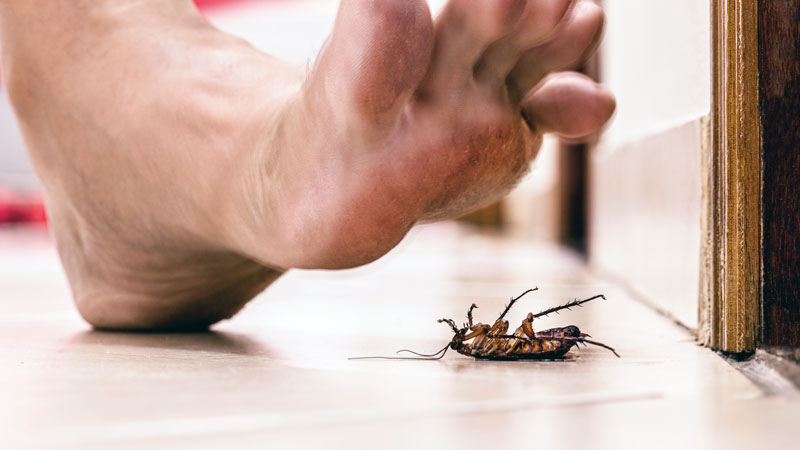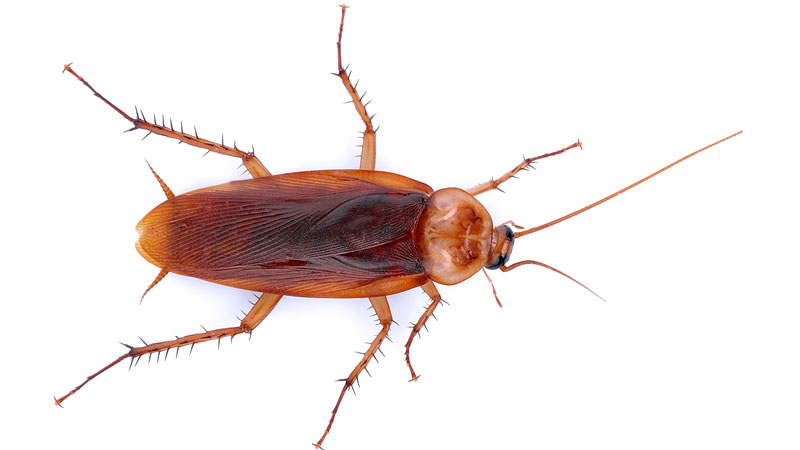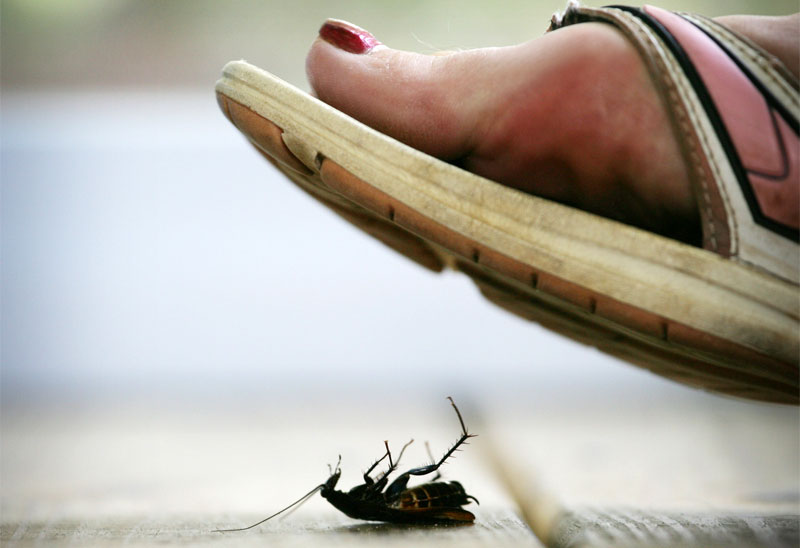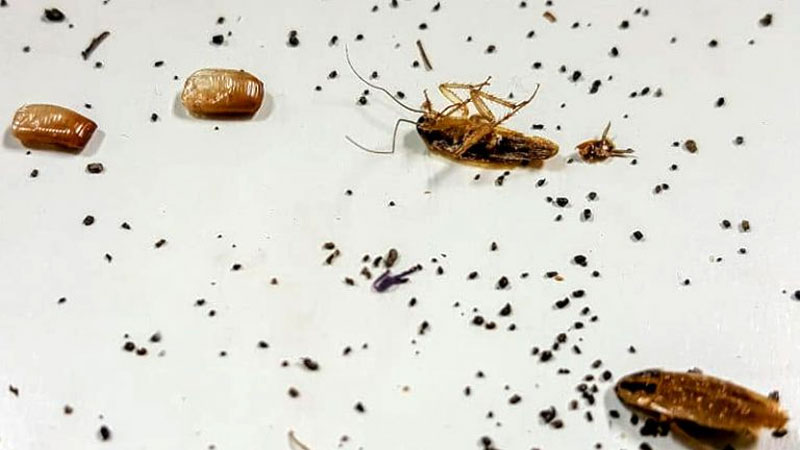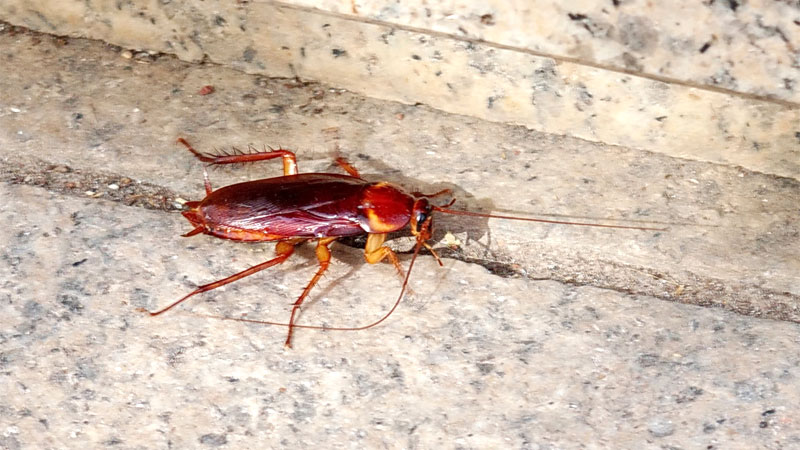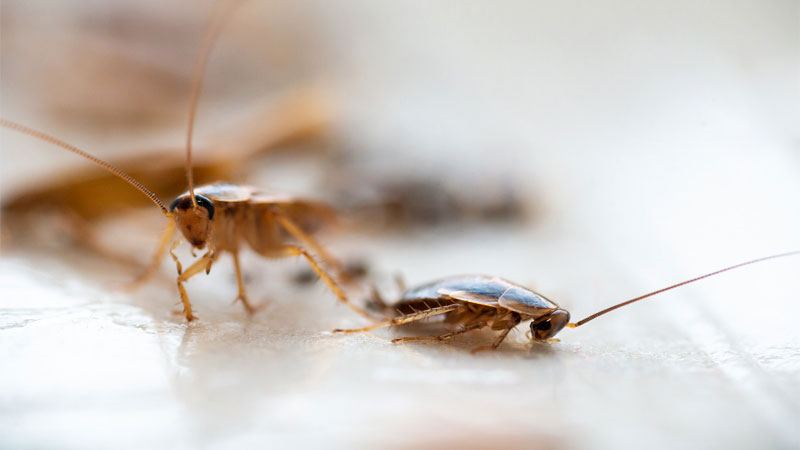When dealing with bugs in the home, your first instinct is to either run or kill them. Squashing tends to be the preferred method for killing a wide range of pests, such as the housefly or (if you’re skilled enough) fleas.
But can you step on a cockroach to kill it, and is it even a good idea to try it?
Will Stepping on Cockroaches Kill them?
Stepping on a cockroach can indeed be fatal to the bug, as the force of your foot can squash its body and kill it instantly.
However, it’s important to make sure that you completely crush it, as cockroaches are known for their ability to withstand significant pressure. There’s also a question of whether or not you should squash a roach.
Let’s dive deeper into the topic, examining the factors that contribute to the effectiveness of this method and why it might not be a good idea.
Anatomy of a Cockroach
Let’s begin with a brief refresher on the common physiology between many types of roaches. We won’t get into termites, which are actually roaches similar to palmetto bugs but have a slightly different evolutionary path.
Exoskeleton
Roach exoskeletons are made from a strong material called chitin, which provides support and protection. They need to get rid of, or molt, these exoskeletons several times during their lives to grow.
After molting, most roaches are white and vulnerable, but a hormone called bursicon causes the exoskeleton to darken and harden, making them more robust again.
How Stuff Works gives a great, detailed explanation of how cockroach exoskeletons work.
Do Roaches Bleed?
When the exoskeleton is compromised, the roach will “bleed” much like we do if our skin is cut.
However, roaches don’t have blood like mammals do. Instead, they have a clear substance called hemolymph, which is the insect equivalent of blood.
This fluid is responsible for circulating nutrients and waste while also providing some immune function.
Although it lacks red blood cells, it does contain various other cells, or hemocytes, that help with clotting and fighting infections.
Can You Kill a Cockroach With a Shoe?
Whether wearing a shoe or using it like a mallet, yes, you can kill roaches and other bugs using any firm-soled shoe. The amount of force caused by swinging or stamping is generally enough to crush the body, resulting in death.
Be warned, part of the legend behind roaches being invincible comes from shoes with tread patterns.
If try to step on a smaller roach in work boots or other shoes with large, deep tread patterns, they may end up in the spaces when you stomp, saving their lives.
Can You Kill Cockroaches By Stepping on Them With Bare Feet?
This is highly unlikely, as studies have found a cockroach can survive pressures of up to 900 times its body weight. More importantly, do you really want dead roach guts all over your bare foot?
Slippers and other soft-bottomed shoes are also bad at killing roaches, as their soft bottoms help cushion the roach on impact.
What Happens When Stepping on a Cockroach
So what exactly happens when you try to step on a roach? Here’s everything you need to know about how they react when your foot comes down.
Do Roaches Poop When You Step on Them?
Roaches can excrete waste when you step on them due to the sudden pressure applied to their bodies. This can be a natural response to being squished, but it’s not always a guaranteed occurrence.
However, if it happens, this can increase the risk of contamination to that area. Be sure to sanitize the area (and your shoe) as soon as possible.
Do Cockroaches Release Pheromones When Killed?
Unfortunately, this can and does happen sometimes. When it does, the victim releases pheromones that attract other roaches (and other creatures looking to scavenge).
This is a huge problem, as you may get rid of one only to end up with ten.
Read Also: What Color of Light Do Roaches Hate?
Potential Issues With Stepping on Roaches
The effectiveness of killing a cockroach with your feet goes beyond whether or not you effectively squash it. There are also some additional risks that need to be considered.
Hygiene Concerns
These pests are notorious for carrying all sorts of nasty bacteria. Crushing a roach on any surface can cause its internal body parts to spill out and contaminate the area.
While healthy adults may not fear the likes of salmonella or E.coli, these can be a major threat to children, pets, and those with compromised immune systems.
Staphylococci is another potential risk that can be potentially life-threatening. Studies have even linked roaches to hay fever and asthma attacks.
Even worse, any food that touches those areas will be contaminated and the five second rule has been proven untrue.
See Also: What Happens if a Cat Eats a Cockroach?
Spreading of Ootheca
Stepping on a roach also raises the possibility of spreading its ootheca, or egg case.
When female cockroaches are crushed, their ootheca can potentially break open and disperse the eggs. If these eggs are viable and end up in a suitable environment, such as a nearby crack or crevice, they can result in additional roach infestations.
To avoid this issue, it’s important to dispose of the ootheca carefully if you happen to squish a cockroach carrying one.
One possible method is placing the eggs in a sealable plastic bag before throwing them away (be careful not to break them when handling!). This will help prevent any hatching nymphs from crawling back into your home.
Can Cockroach Eggs Stick to Your Shoe?
Yes, there is a possibility that roach eggs will stick to your shoes if the ootheca breaks open.
You could then end up tracking the eggs into other rooms where they’ll be able to hatch. However, this would depend on the specific situation, the type of shoe, and the location of the eggs.
Better Methods of Killing Cockroaches
Obviously, stepping on roaches can create more problems than it solves. Thankfully, there are several alternatives available.
Physical Methods
There are many effective methods to eliminate cockroach infestations beyond stomping.
One method involves using a mixture of fabric softener and water in a spray bottle to suffocate them. Of course, this solution works only if it comes into direct contact with the insects.
Another natural option that’s far more effective is to use food-grade diatomaceous earth (or DE). This is a fine powder that can damage the exoskeleton of most bugs, ultimately dehydrating and killing them.
It’s a great option, since this natural product is generally safe and non-toxic for humans and pets.
Borax can be used as an alternative to DE but must be kept out of the reach of children and pets.
Chemical Methods
If physical methods aren’t giving you the desired results, various chemical methods can be considered. Some effective chemical treatments include:
- Bait Traps: These can be bait stations or gel that’s applied using a syringe, which the roaches will readily consume.
- Roach-killing sprays: Sprays such as Raid Ant and Roach Killer are used to directly target and kill cockroaches on contact.
- Insect growth regulators (IGRs): These products, such as Gentrol, are used where spraying isn’t acceptable and prevent roaches from developing or reproducing.
- How to Identify Skunk Poop (With Pictures) - April 1, 2024
- You Really Don’t Need That Opossum Trap - January 4, 2024
- How to Set a Mouse Trap Without Getting Hurt - December 28, 2023

